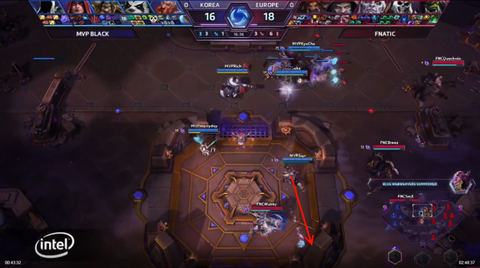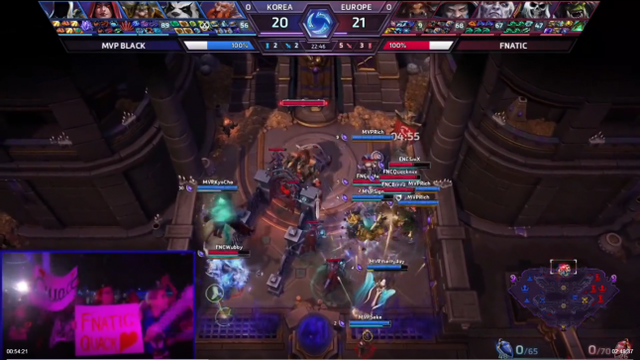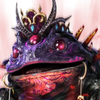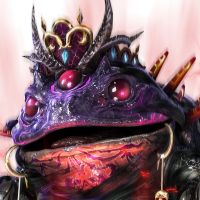
Featured Blog | This community-written post highlights the best of what the game industry has to offer. Read more like it on the Game Developer Blogs or learn how to Submit Your Own Blog Post
On the eSports Failure of Heroes of the Storm
A design-centric analysis of Heroes of the Storm's struggle in the eSports arena.

On the eSports Failure of Heroes of the Storm
A few weeks ago I tuned in to the Blizzcon Heroes of the Storm Fall Championship, one of the most important HoTS competitive events of the year. I was one of 18,000 viewers on Twitch. By comparison League of Legends had about 80,000 viewers at that same time, even though there was no LoL event going on. Overwatch had over 100,000 viewers.
Over the summer a number of professional Heroes of the Storm teams had major shakeups or disbanded entirely, including Cloud 9, the 2015 world champions. This was met with a spate of "Competitive Heroes of the Storm Isn't Dead" think pieces - pieces that would never be written about a game in good health. The state of competitive HoTS is no doubt surprising to some - Blizzard games tend to be at the top of their genre, and Blizzard's Starcraft was one of the first eSports hits. Many commentators were understandably bullish that HoTS would quickly overtake League of Legends and Dota 2 and become the dominant MOBA. That optimism, however, ignored the serious design issues that made Heroes of the Storm a poor fit for competitive play.
This post examines the design decisions that ensured that HoTS would have limited success as a serious professional game, as well as a few non-design issues for the sake of completeness.

Left: Blizzcon Championship viewers. Right: League of Legends Championship viewers - on the Riot Game Turkish channel.
Lack of Storylines
Sports are about stories. Stories of athletes overcoming adversity, such as the familiar Olympic tale of the kid who fell face-first into a puddle but managed to soldier on and become an award-winning diver. (Sometimes these stories can be a bit contrived!) They are also about in-game stories - the ball going through Bill Buckner's legs, Babe Ruth calling his shot, Curt Schilling and his bloody sock. eSports are no different - the best eSports games regularly produce stories of matches, seasons and careers. One of the critical errors of Heroes of the Storm is that the increased team emphasis, a nod to keeping play more casual by reducing individual responsibility for losses, largely destroys the ability to produce player-centric stories.
In Heroes of the Storm there are no meaningful stats to compare individual players, either to members of their own team or to players on the opposing team. The primary stats, XP gained and buildings destroyed, are team-wide, and the individually-tracked stats, like damage taken or healing done, are essentially meaningless, indicative of nothing and routinely (and properly) ignored by casters. This makes a variety of familiar stories impossible to tell: that of the player who struggles in the early portion of the game then makes a dramatic comeback and puts the team on their back, or that of the player who dominates early then falls off as the victory slips away. Or, over a longer period of time, that of the player who dominates in the regular season only to choke in the playoffs, or of the clutch player who turns it on in playoffs. In Heroes of the Storm there is no formalized notion of a good player vs a bad one or a good individual performance vs a poor one, only of a good team vs a bad one. While it's possible to observe that a player is playing well or poorly that observation is not backed by any stats and is not surfaced by the UI - it is effectively anecdotal, a short mental history of "they made some good plays here and here.”
It's hard to compare opposing players due to a lack of meaningful stats, but a lack of real laning phase also plays a part. In LoL and Dota 2 a significant portion of the game is spent with players arranged opposite each other in lanes, making for easy per-lane comparisons - in mid Team A's player is outplaying Team B's, but at bottom lane Team B's duo is outperforming Team A's. Even without careful, evident stat tracking it's clear when one laner is dominating another. But in Heroes of the Storm the laning phase is, for a variety of reasons, somewhere between less important and non-existent. Access to teleportation and healing wells makes it very hard to die in lane without being ganked and reduces the penalty for playing poorly in lane. Access to mounts for fast travel makes rotating between lanes quick. And the lack of individual XP or gold earned through last-hitting means there’s low opportunity cost to traveling between lanes as long as one player is left to “soak” XP. These factors combined makes comparison of opposing laners rarely worthwhile, as lanes are largely decided by the outside influence of roaming gank squads. And with HoTS' increased emphasis on map objectives the the importance of laning is greatly reduced; some maps - like Eternal Conflict, in which players battle to defeat enemy titans while protecting their own - have essentially no laning at all.
Without a way to assess individual performance even a story as simple as “this player started poorly but is now doing well” is hard to tell.
Imagine watching a professional sport with no individual stats - instead of individual ERAs a pitching roster only has a team ERA, and instead of individual batting average or home runs hit the hitting lineup only has team averages. In that ludicrous scenario Lou Gehrig, who in 1927 hit .373 with 47 home runs, was no better than Joe Dugan, a player on that same team you’ve never heard of, who hit .269 with 2 home runs. Using the HoTS philosophy you can only say the same thing about both players: they both played on a pretty good team.
Game Length vs Total Time, or Why It's Just Kind of Tedious to Watch Competitive HoTS Events


Watching competitive HoTS you see an awful lot of this.
As will be a recurring theme in this piece, game length is another design decision that caters to casual while knee-capping competitive. Heroes of the Storm games are short, which goes a long way towards making it more "accessible." When you queue up for a League of Legends or Dota 2 game you know that the game will often take at least half an hour, and can take up to an hour or more. In Dota 2 Cloud 9 and SFZ played a competitive game that went for more than 3 hours - it went on for so long that the game began to entertainingly break down, spawning random FX and graphical corruption while the casters slowly lost their minds. HoTS games are reliably over in 25 minutes or so. While this is great for a player looking to get in, play a game and get out, it's not so great when spectating a competitive event, as shorter game times decrease the ratio of in-game action to filler.
All competitive MOBA matches begin with a pick/ban phase, which while sometimes interesting is often rote, and at the very least is not the meat of the game. And competitive MOBA matches have breaks between games., which can often be extended due to technical, production or mystery issues. The time these two things take have an effectively fixed lower bound and a high upper bound. Short game times mean that these fixed, non-gameplay portions take up a large percentage of the viewing experience. This would be a problem even if the in-game action were a joy to spectate, but it's a critical problem when the in-game action is less spectator-friendly than comparable games and there's also a lower density of in-game time.
Hard for Spectators to Follow
Roll up your sleeves because we’re going in deep!
During the Blizzcon Championships two teams grouped up and headed towards each other. One team was a few levels ahead in XP and up to that point had been dominating team fights, so as the two teams met the casters expected the winning team to keep winning. They didn’t - they lost the fight badly. As a spectator I had no real idea why the team with the significant advantage lost. The casters, who are ostensibly experts, had this to say: “What just happened?” “I have no idea!”
It’s common for viewers new to MOBAs to have trouble following large battles, but I’m not new to MOBAs and it’s the caster’s jobs to be able to follow along. Yet I find in Heroes of the Storm I often don’t understand what exactly is happening or why - and the casters often don’t either. Two teams clump up, ram into each other, and one emerges victorious for difficult-to-explain reasons.
HoTS action feels hard to follow, especially given that the game is supposed to be more accessible and casual-friendly. In large part this is because the action is hard to follow in a strictly literal visual sense - it’s often next to impossible to see what’s happening thanks to a game design that makes poor use of available screen real-estate, concentrating characters and visual FX in a small portion of the screen while the rest goes unused.
In HoTS characters are relatively fat compared to the map size - in League of Legends a lane is roughly 10 character widths across; in HoTS lanes are often 2 or 3 character widths. In HoTS abilities ranges are typically much shorter. Compare for example Muradin’s ranged stun in HoTS to Morgana’s snare in League of Legends - they are pictured below, with red arrows drawn in to make their ranges clearer.


The prosecution presents Exhibit A, Muradin from Heroes of the Storm first, Morgana from League of Legends second.
Relatively fat characters and short ranges on abilities mean that team fights often consist of characters elbow to elbow, leaving large portions of the screen unused. As another example here's a comparison between two other similar abilities in Heroes of the Storm and League of Legends - ETC's "Mosh Pit" vs Galio's "Idol of Durand", both AOE taunts (more or less) centered on the caster. Once again I've added a red overlay to better indicate range.


The prosecution presents Exhibit B. (Full disclosure - the paragraph above mistakenly referred to ETC as EMC, which is an enterprise storage solutions company and not in fact the name of a Heroes of the Storm character)
As you can see, the screen-space range of the LoL ability is double or more that of the HoTS ability, a common pattern when comparing the two games, which leads to tightly packed teamfights.
League of Legends and Dota 2 spectator modes now include the ability to zoom out farther than is allowed in-game as team fights often take place over a wide range. These fights tend to have a lot of visual separation, making it easy to spot individual ability uses, clutch dodges, etc. This separation can make it hard to take in the entire team fight in one go as there are pockets of activity spread out over a large screen area, but on first viewing the action in the part of the screen the viewer is focused on is clear, and replays can elucidate the rest.
In Heroes of the Storm team fights take place in a very small area, making it difficult to spot individual ability uses or clutch plays - often the characters are so overlapping that it’s hard to tell who’s who or make out anything beyond a variety of sparkly explosions.
As a final example I'll present a picture of a teamfight from one of the Blizzcon games. As you can see, on the right side there are 7 different overlapping characters packed so tightly together it's hard to make out anything - what direction characters are facing, what abilities they are using. Some of the character models aren't visible at all, and there's a huge golem in this picture that's easy to miss, despite it being the "boss" character the teams were fighting over. Note how much of the screen is not being used - the left and right thirds and the top 25% or so.

The prosecution presents Exhibit C.
Low Degree of Difficulty
Discussing difficulty in competitive games is tricky because in some sense the difficulty is based entirely on the opponent - we can say that Checkers is easier than Chess which is easier than Go, but I would lose against a top Checkers player just as often as I would against a top Go player.
So instead I will use the term “degree of difficulty” here, which is the difficulty of playing the game, rather than the difficulty of winning the game. Two-hand-touch football has a lower degree of difficulty than tackle football, as tackle football includes all the skills required to play touch football and plenty more.
Heroes of the Storm, by design, has a low degree of difficulty, which is again a nod to casual players but a detriment to the competitive scene.
I won’t exhaustively list the ways in which HoTS has a lower degree of difficulty, as I think it’s rather obvious for someone familiar with MOBAs, but let’s take one low-level mechanical example: the number of different keys you have to regularly press during play.
In Dota 2 there are, minus some caveats, 4 main ability keys. There are also keys used to control the courier, 1 or 2 if you want rudimentary control and 5 or 6 for total control. Depending on your character and items you may have a few different control groups, and Dota 2 has many items with activated abilities, including items that are toggled frequently. All told that’s maybe 16 or so keys a competent Dota 2 player regular presses - and that’s not getting into things like shop shortcuts or professional play.
Heroes of the Storm has no courier, no control groups (or at least they are rare and hero-dependent), no activated items. Most characters will use the 4 main ability keys and then somewhere between zero and two activated traits, as well as the “ride mount” key. So a competent HoTS player has to regularly press maybe 6 keys.

Thornton Melon beginning the Triple Lindy, a dive so difficult only one person has performed it successfully.
People don’t watch low degree of difficulty sports when directly comparable higher difficulty sports are available. We watch Baseball over Softball, tackle football over touch or Lingerie football. There are some exceptions, but broadly speaking people want to watch gifted athletes doing hard-to-do things, not gifted athletes doing easy things. You probably wouldn’t watch an Olympics gymnastics balance beam event where each competitor’s routine was to simply successfully walk from one end to the other, despite the fact that some competitors would be better at it than others and scored the winner.
One of the explanations for lack of interest in competitive Heroes of the Storm is that there are similar games that are directly comparable but more difficult.
“Now”, the astute reader might interject, “what about Hearthstone? It’s much simpler than Magic: The Gathering but online competitive Hearthstone is much more popular than online competitive Magic.”
Hearthstone is much simpler than Magic: The Gathering, but for reasons I won’t get into (mostly related to passing priority and how all actions are permission-based) Magic is poor online game. It works best in casual settings, worse in formal real life settings like tournaments, and even worse in an online, completely formalized implementation. So while Hearthstone is no doubt simpler than Magic, Hearthstone offers many advantages over digital Magic in a way that Heroes of the Storm does not over its’ competitors.
Non-Design Issues and Odds and Ends
For the sake of completeness I’m going to go over some non-design reasons for lack of interest in competitive HoTS. I’ll dispense of these rather quickly.
Similar to degree of difficulty, degree of competitor may also be an issue. One of the star players for Cloud 9 / TempoStorm was a professional LoL player who sort of fell out of the scene after a career as a middling player (of course, being a middling pro player still is better than 99.9% of the player base!), and one the most popular streamers / semi-professional players is someone who flirted with a mostly unsuccessful semi-pro LoL career. A top tier MOBA player can play Dota 2 for a chance to win millions of dollars at The International, or play League of Legends and draw a regular, fairly high salary. From a financial standpoint it’s highly irrational for a truly great MOBA player to play HoTS over LoL or Dota 2, especially when the games are so comparable with highly overlapping required skills, so it’s hard not to see HoTS as an XFL-style “best of the rest” league. I said previously that spectators want to watch the best competitors doing the hardest things, rather than the best competitors doing easy things, but the competitors in HoTS probably aren’t the best MOBA players.
Many articles have been written about the Heroes of the Storm talent system, how it's unfriendly towards spectators, but one thing I haven't seen mentioned much is the pacing problems the talent system introduces. In item-centric MOBAs items are bought on a fairly regular schedule, which allows casters to highlight the important purchases or fill time when needed. In Heroes of the Storm there are long periods of time during which nobody learns any talents, then an instant when each hero on a team learns one. The same is true of hero ultimate abilities - all heroes on a team will select them at the same time as they're tied to team XP. This leaves casters in the position of having to either ignore talent and ultimate choices or talk about them well after they've been selected, both of which hurt casting quality.
Tediousness Revisited
While I was editing this blog I saw that a HoTS event was taking place and dropped in with the idea of timing how much of an hour was gameplay vs other stuff. I've been watching for 20 minutes and the only thing I've seen is ads - ads for HoTS characters and skins, ads for Overwatch, ads for Blizzard. This time isn't gameplay, it's not the pick / ban phase, it's not analysis and replays of the last match, discussion of the upcoming match - it's just ads. Now 25 minutes of ads.

Twitch chat ain't got time for no ads!
As mentioned previously, because HoTS games are short by design tournaments necessarily have a large ratio of filler to gameplay. But compounding that are production problems (or decisions?) like these. Not only are between-game breaks inexplicably long, but they are consistently filled with ads. Much of my experience with HoTS viewing is centered around Blizzcon, and I'd assumed that this preponderance of ads is explained by Blizzcon viewers being a wide range of Blizzard enthusiasts who's eyes would glaze over at hardcore HoTS talk. But this event I'm watching now is a dedicated HoTS event and it's still saturated with ads rather than any sort of sports-style analysis. Here's the secret of competitive game events: the event itself is already an ad for the game! So driving people to tune out by subjecting them to 30 minutes of ads is probably counterproductive.
I am just now seeing a pick/ban screen in this tournament, 40 minutes after I tuned in. So out of an hour sampling at most 20 minutes will be game screens of any kind, and maybe 10 minutes of it will be the meat of the game. Not all HoTS events are this bad in terms of ratio of filler to content but this is not a far outlier either.
Lack of Streaming Popularity
One final point I’ll touch on - eSports and streaming are currently inseparable. HoTS is a not a popular game to watch competitively and it’s also, not coincidentally, not a popular game to watch casually on streams.
One of the reasons Hearthstone took off on Twitch is that popular League of Legends players would play it during downtime between matches. This was so helpful to Blizzard that Riot Games, makers of LoL, temporarily forbid pro players from streaming non-Riot games, as they felt that pro players were biting the hand that fed them by using their League of Legends notoriety to promote competing products.
Heroes of the Storm games are short, but not short enough to stream between League of Legends matches the way Hearthstone games are, and are fast-paced enough to make alt-tabbing or separate-window play unrealistic. So HoTS can’t piggyback off of popular streams the way Hearthstone was able to.
Twitch streamers tend to come in two molds - variety streamers who stream whatever is new or, barring that, gravitate towards open world co-operative / competitive games like ARK or H1Z1, and single-game streamers who maybe dabble in other games at the end of streams or during downtime. There are also streamers who specialize in certain genres, like FPS games, but to my knowledge there are no popular streamers who specialize in the MOBA genre rather than a specific MOBA.
Heroes of the Storm doesn’t fit well into the streaming ecosystem - variety streamers don’t play it because it’s not new and not in a genre they care for, and it’s a poor fit as a downtime / unwind game for a dedicated streamer. This makes the only place to view Heroes of the Storm dedicated HoTS channels. But these channels are not popular, which present a chicken-and-egg problem.
Pithy Conclusion

I finally had time to elaborate.
Read more about:
Featured BlogsAbout the Author(s)
You May Also Like







.jpeg?width=700&auto=webp&quality=80&disable=upscale)








